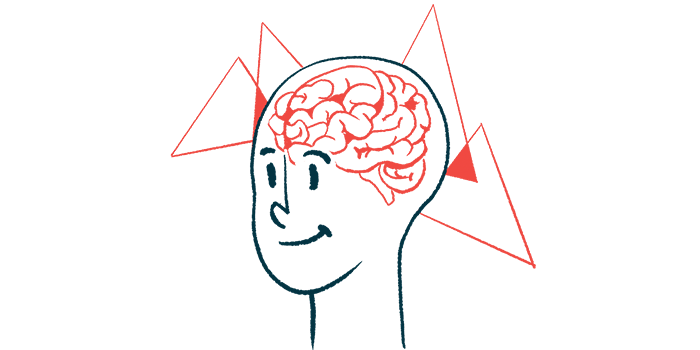CNM-Au8 Seen to Raise Energy Metabolism of Brain in RRMS Trial
Written by |

Clene’s investigational oral therapy CNM-Au8 improved energy metabolism in the brain of adults with relapsing-remitting multiple sclerosis (RRMS), according to top-line results from the REPAIR-MS trial.
This open-label Phase 2 pilot study (NCT03993171), taking place in Texas, is running in parallel with REPAIR-PD, another Phase 2 open-label trial showing similar results in people with Parkinson’s disease, a neurodegenerative disease caused by the loss of certain brain cells.
CNM-Au8, also being developed for the progressive neurological disease amyotrophic lateral sclerosis (ALS), is designed to support biological reactions within cells that generate energy, which become impaired in neurodegenerative diseases.
In the brain, both neurons and supporting cells, including myelin-producing oligodendrocytes, need substantial amounts of energy to work. Myelin is the fatty sheath around nerve fibers that is mistakenly targeted by the immune system in MS.
CNM-Au8 — a liquid suspension of nanocrystalline gold — aims to increase energy reserves within these cells, while helping to remove toxic substances of cellular metabolism, and enhance myelin production by oligodendrocytes.
“Clene is a company driven to pioneer the development of cellular energy-enhancing nanotherapeutics for the treatment of neurodegenerative diseases,” Rob Etherington, Clene’s CEO, said in a press release.
“We believe the study results also strongly support Clene’s ongoing Phase 2 and Phase 3 clinical programs investigating how CNM-Au8’s neuro-reparative and neuroprotective properties may impact disease progression in amyotrophic lateral sclerosis, multiple sclerosis, and Parkinson’s disease, and may be broadly applicable to the treatment of neurodegenerative diseases,” he added.
Top-line results from the REPAIR-MS study included data from 11 adults with RRMS given oral CNM-Au8 each morning for 12 weeks, and who had undergone repeat imaging scans.
The study’s main goal was to measure changes in the ratio of two metabolic markers — NAD+ and NADH – that indicate how much energy cells produce. The ratio was measured using 31-phosphorous magnetic resonance spectroscopy (31P-MRS), a non-invasive brain imaging technique.
The pre-specified analysis of the REPAIR-MS study, combined with data from 13 Parkinson’s patients included in REPAIR-PD, demonstrated a statistically significant increase in energy metabolism by an average of 10.4% following 12 weeks (or three months) of treatment.
In key secondary outcomes, there was an increase in the mean NAD+ levels and a decrease in NADH, in line with the primary results. Data from REPAIR-MS participants were consistent with the combined trial results — but failed to reach statisitical significance, likely due to the low number of patients in each study.
An additional exploratory outcome measured the balance across essential energetic metabolites, including adenosine triphosphate (ATP), the primary molecule for storing and transferring energy in cells.
The percent change from before treatment (baseline) to after 12 weeks was significantly and inversely correlated with baseline levels — meaning that energetic metabolites rose in patients with low baseline levels and re-balanced in those with relatively higher baseline levels. This effect was seen across both studies, as well as independently in REPAIR-MS and REPAIR-PD.
REPAIR-MS may reopen and enroll new patient dosing groups, depending on discussions with trial investigators. But it is currently not recruiting, Clene stated in an email response to Multiple Sclerosis News Today.
“We believe the REPAIR program represents a critical breakthrough for Clene, demonstrating that catalytically active CNM-Au8 improves energy production and utilization in the brains of people with Parkinson’s disease and multiple sclerosis,” said Robert Glanzman, MD, chief medical officer at Clene.
“Using a novel, non-invasive brain imaging approach, the study demonstrated that a key driver of cellular ATP energy production, the ratio of NAD+/NADH, was significantly increased in the brains of patients after three months of daily CNM-Au8 oral administration,” he added. “Remarkably, the data also show a significant re-balancing of brain beta-ATP levels in these patients, a metabolic response to treatment that suggests improved ATP energy efficiency.”
In MS patients, improvement was also seen in all four scales of the modified MS functional composite clinical assessment, including the digit modalities test for cognitive speed, low contrast letter acuity for visual disability, the nine-hole peg test for dexterity, and the timed 25-foot walk test, which measured walking speed.
Regarding safety, CNM-Au8 was well tolerated with no serious adverse events or treatment discontinuations. Adverse events were primarily mild and not related to treatment.
REPAIR-MS findings will be presented in detail at the 37th Congress of the European Committee for Treatment and Research in Multiple Sclerosis (ECTRIMS) in October, the company said.
“Our next step will be to demonstrate that these brain energetic changes result in clinically meaningful results in patients with Parkinson’s disease and multiple sclerosis,” Glanzman added.
A separate Phase 2 trial, called VISIONARY-MS (NCT03536559), is testing the remylineation potential of two escalating doses of CNM-Au8 against placebo for 24 weeks in up to 150 adults, ages 18 to 55, with relapsing MS and vision problems due to their disease. VISIONARY-MS is currently enrolling eligible patients at sites in the U.S., Australia and Canada.
People who complete this trial are being invited to continue or start on treatment in its long-term and open-label extension study, VISIONMS-LTE (NCT04626921).






